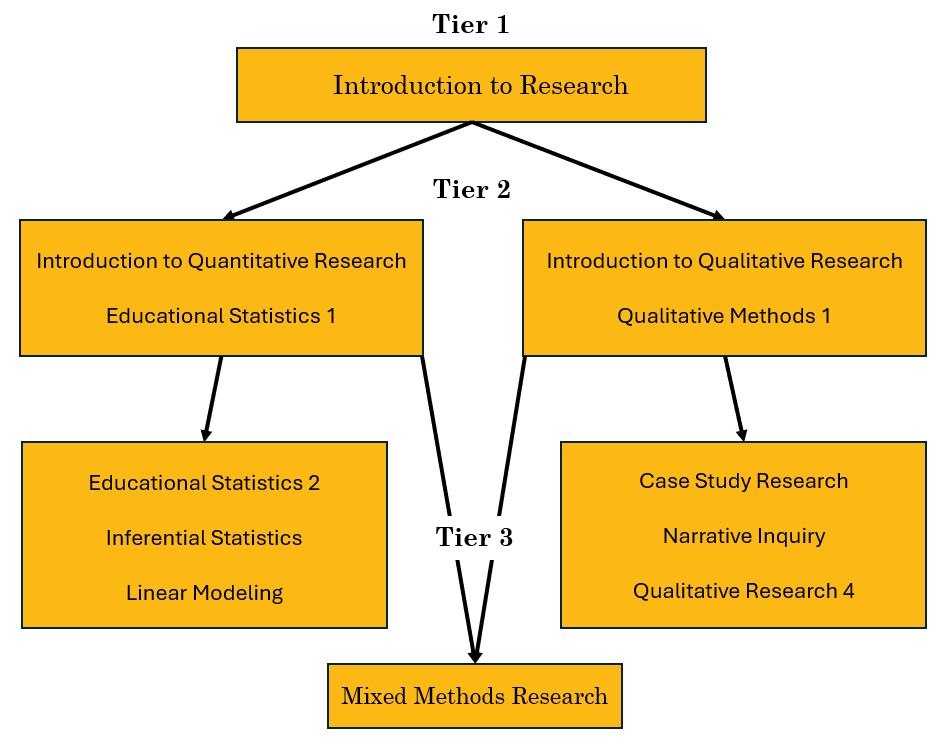Introduction
Phillip Olt
The purpose of this book is the provide an open-access, free textbook for initial learning about research for students in the social sciences and related professional fields (such as education, social work, business, or nursing).
Where does that fit into curricula? Below are examples of course titles that may be used reflecting the progression of research training, with the lines between courses being prerequisite courses to proceed with the next level. Typically, the course texts used at each tier will get increasingly more specific with the associated course content.

In fields where the entry-level professional credential is most commonly the bachelor’s degree (such as education or social work), Tier 1 tends to fall at the master’s level with Tiers 2&3 at the doctoral level. Of course, that does not preclude the inclusion of some research content in such areas sprinkled into undergraduate curricula, but that tends not to be a dedicated immersion into research for the sake of understanding research itself. In fields with non-defined professional entry credentials or where professional credentialing normally first occurs at the master’s level, Tier 1 is more often at the upper-division undergraduate level, with Tier 2 at the master’s level and Tier 3 at the doctoral level. However, there are variations within those. This textbook is intended for a Tier 1 course where the focus is on research literacy and a first attempt at thinking about conducting one’s own research. It is not intended as a final authority for the content in such courses; rather, it is a springboard for teaching and a foundation for common understandings.
A friend who is a black belt in the martial arts discipline of Taekwondo once explained the belt system to me in this way. The initial belts tend to be filled with those who do not really know what they are doing and thus lack confidence. The middle belts are those who think they know what they are doing and have too much confidence in themselves. They tend to lack control and be the most dangerous. Those at the highest belts have mastered knowledge, confidence, and control. While perhaps not a perfect illustration, I think there is some parallelism with Tiers 1, 2, & 3 of research training outlined above.
This book is not meant to be comprehensive. It is likely that there will be points in this book where advanced researchers find themselves screaming for more about something that could have been included or where something has been oversimplified. That is a limitation of Tier 1 research education; it is the first step into a pool that seems infinitely wide and deep. Instructors may, of course, add supplemental content or clarification for their students; however, students who want to know more should pursue further studies in Tiers 2&3 and explore the “Additional Resources” provided at the end of each chapter.

